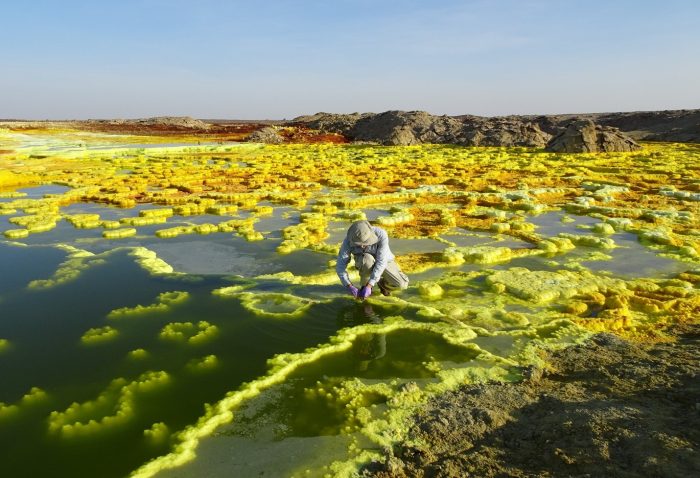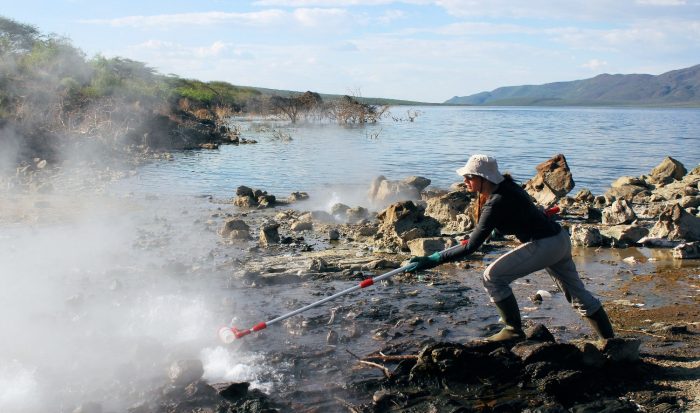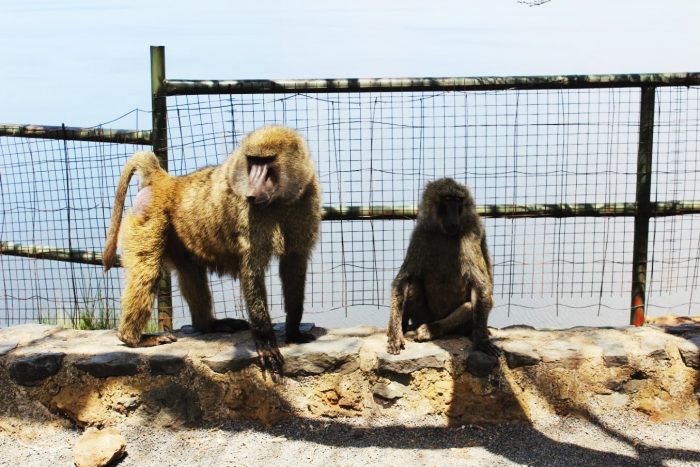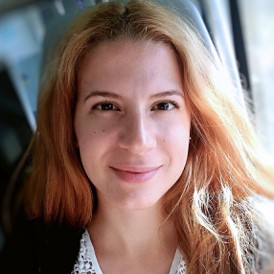A hitchhiker’s guide to the field trip
Electra Kotopoulou
How often do you get to be attacked by a baboon that thinks your samples are yummy, find 2-3 buffaloes bathing in the spring you need to sample, board a helicopter to reach a caldera, capture the aurora borealis or make friends with penguins? I still remember a colleague that was working on mangroves sediments mentioning he was sampling among crocodiles and alligators. Don’t want to imagine how it is like if your actual topic is THE alligator! Whether you are a geoscientist, (micro)biologist, archaeologist, anthropologist or other, your PhD might require fieldwork. Rejoice and have a look at my hitchhiker’s guide to the fieldtrip.
Before your trip
ORGANIZATION is the magic word. Take several months in advance to study the sampling site, organize the trip and prepare the equipment. Your equipment list might include, among other things, maps, GPS, material for sampling, labware for in situ experiments, chemicals, equipment for in situ measurements, dry ice for organic material preservation etc. Make sure any equipment used is previously tested/calibrated in conditions similar to those you will want to sample (this is very important for extreme conditions, e.g. very high salinity, very low pH etc.).

Don’t forget to pack with your personal items a first-aid kit, medicine, water purification tablets, solar power bank, energy bars etc. Make sure you have the proper outfit/shoes/hat for the expected weather and sampling conditions.
You’ll probably need to take care of permits for carrying lab material, for accessing the sampling site and for bringing back your samples. This might take from weeks to …several months and you will need a well-informed local contact. Also, it might be a good idea to contact the consulate office of your country if you’ll be visiting a remote place abroad.
Sampling for the sake of sampling makes no sense! You want to always keep in mind the overarching goal of your research, the questions you wish to answer and what measurements/analyses are needed to get to those answers. This is both important for estimating what and how much material you will need to bring with you, but also for organizing your sampling strategy. And because you might want to bring some extra sampling bags/bottles in case a baboon shows up with a substantial curiosity in lab material. You´ll need to find the balance between the stuff needed and the weight you will be carrying on the field.
Make sure everyone is on the same page about the sampling strategy and their role during fieldwork, such as: collecting, labeling, storing the samples, calibrating electrodes, organizing notes, sketching, taking photos and videos, performing experiments, keeping an eye for crocodiles, lions, bears, active geysers.. By the way, never be alone in the field!

During your trip
Inform, engage and above all respect the locals. They have a right to know what you will be doing in their land and they can most certainly provide valuable information. Who knows better the hot springs of the soda lakes of Kenya than the Maasai moran of the region (greets to Lucas if he is reading!). Also make sure to communicate the results to them later on.
Take extra care during the in situ measurements and remember that the moment you collect the sample you are altering it. Spend some time each day to organize notes/photos/videos/samples of the day. Don’t fool yourself that you will remember everything in some months’ time. The moment you set foot into the lab many of the things you saw and sampled will be forgotten and finally pass to oblivion.
Probably the best attitude is to act like you will only have one opportunity to visit the sampling site. This is hardly an overstatement; by the time you return the landscape will have changed, giving you the chance to observe something new each time. But, will you need to revisit? Make no mistake in assuming that and be grateful if you can come back more than once. In any case, you’ll be having more questions than answers after the first fieldtrip. It is usually during the second fieldtrip that you start answering these questions. Also, revisiting the site will allow you to do complementary sampling, explore new areas or refine in situ measurements. However, for a second fieldtrip to be meaningful, it is paramount that you have already analyzed the data/samples of the first trip.
And most importantly, don’t forget to enjoy! Breath in the views, sunrises, sunsets, gaze at the unique landscape, enjoy living surrounded by wildlife (try not to get eaten by the alligator please)! Take advantage of every possible minute to grasp what your eyes and senses can see, smell, touch. You are there for your thesis! Isn’t this wonderful?

After your trip
If the fieldtrip lasts -for example- 15 days in total, prepare yourself mentally and physically to add 2-3 days more to this period, before you‘ll be able to get some rest. The fieldtrip actually finishes when you have properly stored all your samples and are ready to start your experiments/measurements back in your home institute.
I feel blessed that my research includes fieldwork. You gain great pleasure and knowledge by collecting, yourself, the sample that you will later analyze and experiment with. If you have the chance to do fieldwork and collect your own samples, seize it! Let nature be your teacher and don’t forget that fieldwork is fun!! Just imagine smelling like a volcano even though it’s been one month since you got back from the field..!
Cheers!

Electra Kotopoulou is a geochemistry PhD student at the Spanish National Research Council (CSIC-IACT)
Related Content:

Guest Forum
Writing a Winning NSF Proposal
